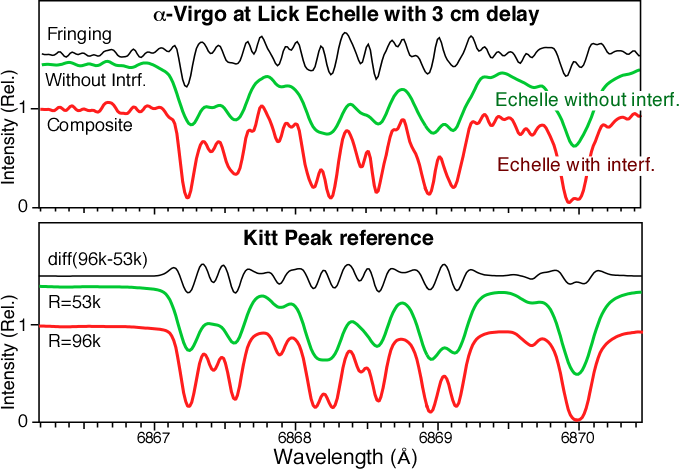Demonstration of 2x resolution boosting |
||
R~50k boosted to R~100k |
||
 |
||
Demonstration of resolution boosting effect on an echelle spectrograph using the narrow telluric lines in starlight. This shows that the EDI technique even works in the presence of noise, which is photon noise due to the weak signal. The bottom panel displays theory curves showing what the spectra should look like. They are based on sunlight spectra recorded by the Kitt Peak FTS with resolution R~500k and artificially blurred to R~96k (red) or R~53k (green)). Raw data and photos of the EDI apparatus at the Lick echelle spectrograph For more info see Ref. 7 |
||
 |
||
This is a similar measurement, made on the same apparatus but with a brighter source (iodine spectrum) so that photon noise is not an issue. |
||
www.SpectralFringe.org site maintained by |
||||